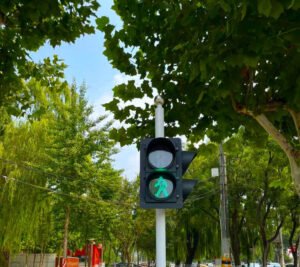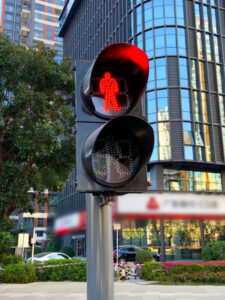In modern urban development, stop lights play an indispensable role in maintaining road traffic safety and order. However, as environmental awareness increases, people are beginning to recognize the significant impact these systems have on ecosystems. From reducing light pollution to protecting wildlife during crossings, they are gradually becoming key elements in achieving harmony between urban environments and the natural world.
Stop Lights That Reduce Light Pollution Serve Nighttime Ecology Better

While high-intensity lighting improves driving safety, it also causes serious disturbance to nocturnal species.
Recent studies indicate that more than 80% of the global population is exposed to light-polluted night skies, a condition that significantly interferes with wildlife circadian rhythms and seasonal migration patterns.
For instance, research in urban areas has found that insect populations can be reduced by up to 60% in areas with excessive nighttime lighting. To reduce this impact, some cities have adopted low-blue or amber spectrum LEDs, which are less disruptive to wildlife. Advanced systems also feature directional beam control and adaptive dimming, which can lower brightness by up to 70% during low-traffic hours, significantly decreasing unnecessary light spillage.
These improvements not only reduce energy waste, but also play a crucial role in preserving nighttime ecosystems, supporting healthier populations of bats, insects, and migratory birds.
Ecologically Aware Stop Lights Improve Animal Safety and Energy Efficiency
In natural-edge zones near forests, parks, or wetlands, traditional signal infrastructure often creates unintended hazards for wildlife. It’s estimated that in the United States alone, over one million animals die annually from vehicle collisions, many of which occur in ecologically sensitive areas.
To address this, some cities are deploying animal-activated stop lights using infrared or motion sensors. For example, when a deer or other large animal is detected near the road, the system can temporarily switch the signal to red, alerting drivers in time. These systems have shown to reduce wildlife-related accidents by 30% to 80%, depending on the species and implementation site.
Additionally, traffic signal modernization contributes significantly to energy efficiency. A traditional incandescent stop light consumes about 100 watts per unit, whereas modern LED models use as little as 10–15 watts, representing up to 90% energy savings. When scaled across a city with thousands of units, this not only reduces electricity costs but also helps curb urban carbon footprints by several hundred metric tons of CO₂ per year.
Real-World Eco-Friendly Stop Light Projects Demonstrate Positive Results

- Freiburg, Germany:
In this eco-conscious city near the Black Forest, authorities installed stop lights with specialized light shields along forest-adjacent roads. These shields direct illumination downward, preventing excess light from scattering into habitats. Monitoring showed that bat activity in the area increased by 35%within two years, indicating reduced nocturnal disturbance and improved habitat quality. - The Hague, Netherlands:
The city implemented a seasonal traffic light system at amphibian migration corridors.
By integrating subsurface sensors with programmable controls, the city ensures that temporary stop lights operate precisely when wildlife movement is most active.
Local conservation data showed a reduction of amphibian roadkill by 85%, preserving several vulnerable species including the common toad (Bufo bufo). - Florida, USA:
Municipalities along turtle-nesting coastlines replaced traditional lights with turtle-safe amber LEDsemitting wavelengths above 560 nm, which are less visible to hatchlings. Additionally, lights were repositioned or shielded to face away from beaches. As a result, disorientation events for baby sea turtles dropped by over 50% in key monitored zones over a 5-year period.
Future Ecologically Sensing Stop Lights Will Connect Cities and Nature
With the advancement of smart city infrastructure, the next generation of stop lights will integrate ecological sensors, AI-driven traffic modeling, and GIS-based wildlife mapping. These systems will not only adapt based on real-time traffic flow but also respond to patterns of animal migration, seasonal changes, and weather events.
For example, future systems might include automated signal dimming during peak bird migration hours, or integrate with wildlife corridor alerts to create dynamic speed or stop control. Such innovations will enable cities to function more like “eco-aware” organisms—balancing mobility with habitat preservation.
Conclusion
The ecological transformation of signal light systems is an important direction for sustainable urban development. By reducing light pollution, ensuring animal safety, and cutting energy consumption, traffic infrastructure is evolving from a single-function tool into a multi-dimensional asset. Quantifiable benefits—from energy savings of up to 90%, to roadkill reductions of over 80%, and improved biodiversity indicators—highlight the crucial role stop lights can play in ecological balance. In the future, the integration of science and environmental design will make cities not only safer, but also more nature-friendly.
